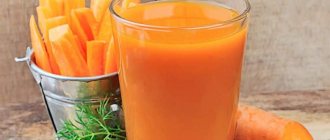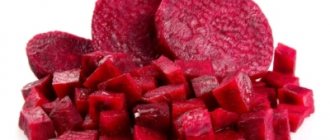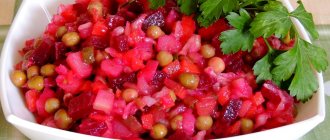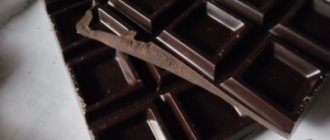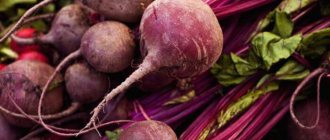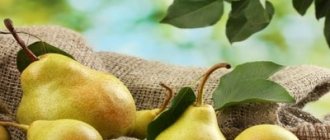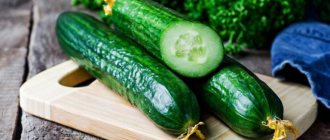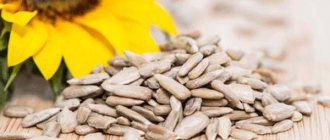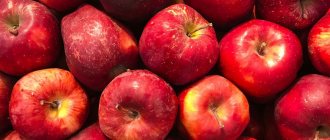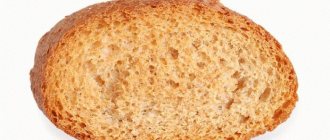Beets, unfortunately, are an underrated vegetable. It is used in borscht, vinaigrettes, and salads as one of the ingredients. Although, this is a full-fledged side dish for every day. Then the benefits of beets will become noticeable.
The secret of an amazing vegetable: beets do not lose their properties when cooked. So, by boiling beets, we get rid of nitrates. Of course, some of the vitamins will go away, but the microelements will remain.
Boiled beets retain all microelements
The beets are steamed for about 15 minutes. Boil it entirely for about 40 minutes. You can bake the vegetable in the oven. The process will be faster if you use a baking bag or baking bag. In the microwave, the vegetable will cook in twenty minutes.
What does a vegetable contain that affects the human body?
Diet can be both the cause of the disease and a way to treat inflammatory processes in the body. Beets are rich in nutrients, salts, micro and macroelements (iodine, manganese, chromium, zinc and others).
The root vegetable can and should be included in the patient’s menu, as it relieves inflammation of the pancreas, but provided that the measures are followed and the recommendations of doctors are followed.
Beets have a number of positive effects on the body:
- Due to its iodine content, the vegetable is recommended for use in diseases of the pancreas, since the microelement is involved in the process of restoring the impaired functions of this organ.
- Boiled root vegetables, regularly eaten, stimulate the production of choline, speed up the process of protein digestion, which also leads to improved pancreas function.
- Improves the circulation of bile in the body thanks to flavonoids, which relieve tension from the walls of blood vessels.
- Pectins contained in beets help remove harmful salts.
You can learn more about the benefits of beets for human health in a separate article.
Is it possible to eat with pancreatitis or not?
Beets are recommended, if there are no contraindications, by nutritionists for use in cases of pancreatitis.
After taking this vegetable, processes occur that improve the functioning of the body of a patient with pancreatitis, against the background of which the activity of the pancreas improves.
When taking beets, a patient with pancreatitis improves:
- process of fat metabolism;
- water-salt balance;
- cleansing the intestines (we talked in detail about how to cleanse the body with beets here);
- activity of the kidneys and liver (you can see folk recipes for treating the liver with beetroot juice here);
- metabolism.
Is it allowed to use for cholecystitis?
Beets have a choleretic effect on the body, protect against the formation of stones in the gallbladder and its ducts (read about the nuances of treatment with beets for cholelithiasis in a separate material). The vegetable is useful in the treatment of cholecystitis; it helps relieve congestion and blockages of the bile ducts. Treatment of cholecystitis must be carried out promptly; it can spread to the pancreas and cause pancreatitis.
The attending physician will be able to accurately answer the question whether or not to eat beets for pancreatitis and cholecystitis, using the patient’s clinical data and general anamnesis for analysis.
Beets are a storehouse of nutrients. An important feature of the product is the resistance of its components to storage and heat treatment. Read about whether people with stomach and duodenal ulcers, gastritis, constipation and cancer can eat beets on our Internet portal.
Diet No. 5
Diet No. 5 is used by patients to reduce the load on the liver tissue and gall bladder. Increased work of internal organs in the presence of an inflammatory process is reduced. Diet No. 5 includes different principles:
- Splitting meals. They calculate how much food a person should consume in a whole day. It is divided into 5-6 parts, which are consumed evenly.
- Fats of animal origin are not recommended; only vegetable fats are consumed.
- Calculates the optimal daily calorie intake. It is calculated based on the patient’s age, weight, height, and gender. But on average, a person needs to consume about 2800 kcal per day.
- Of all types of food, fruits and vegetables are recommended.
- Water balance. An adult should drink at least 2 liters of water per day to maintain the required amount of fluid in the body.
- Avoid large amounts of salt; add it to dishes in a minimal amount.
- The process of cooking. It can be boiled or stewed. It is forbidden to fry, bake, smoke.
- Temperature conditions. All food should be warm. It is forbidden to eat excessively cold or hot food.
It is important to eat food with a good appetite. The patient must like it, otherwise there will be a negative effect on the gastrointestinal tract.
Video diet No. 5 according to Pevzner
Does the type of pancreatitis affect consumption?
The consumption of beets by patients with pancreatitis is influenced by the stage of development of the disease.
Administration for acute inflammation of the pancreas
During exacerbation of the disease, experts do not recommend introducing beets into the diet. In addition to biologically active components that are beneficial to the body, the vegetable contains coarse fiber fibers, which increase the load on the digestive system. In the acute stage of pancreatitis, such plant foods can lead to a sharp deterioration in the patient’s condition and the occurrence of side complications, since it adversely affects the pancreas.
In acute cases, the consumption of raw beets is contraindicated; controlled consumption of boiled beets is acceptable.
And only after the attack is finally relieved is the root vegetable allowed. The daily norm should not exceed 1 tbsp. l. It is gradually increased to 100 g per day, while monitoring the condition of the patient who has undergone the acute phase of the disease. If an alarming symptom appears, the vegetable is immediately removed from the diet. Read more about whether you can eat a vegetable every day, what the consumption rate is and the dangers of exceeding it in our article.
For chronic
Is it possible to eat boiled beets with pancreatitis? For patients who are in a stable phase of remission of pancreatitis, beets are included in the diet. However, even in this form of the disease, you should not expose the pancreas to intense exposure to fiber when digesting raw root vegetables, so as not to provoke attacks of the disease. Therefore, it is recommended to heat and mechanically treat beets before consumption.
Patients can eat 100 g of boiled vegetables daily , since in the chronic phase of pancreatitis, the body is restored and is able to absorb nutrients.
In what form is it best to eat?
With the development of pancreatitis and cholecystitis, it is important to take into account not only the form of the disease, but also the type of treatment of the root crop when taken. Since therapeutic nutrition is based on the property of relieving the main symptoms. Let's consider how eating beets affects the patient's body, depending on the type of preparation.
Raw
Doctors do not recommend including raw vegetables in the diet of patients with a gentle diet. In order not to cause an increase in the secretion of digestive enzymes, not to provoke a relapse of the disease. It is this effect that raw beets have on the body, disturbing the peace of the pancreas.
However, in some cases, under the supervision of a doctor, in the stage of stable remission of the disease, patients are allowed to drink beet juice.
The drink does not contain a large amount of coarse fiber , but has a biochemical effect on the digestive tract, increasing secretory functions.
In order not to provoke a load on the pancreas, you should follow certain rules when taking beetroot juice.
Freshly squeezed juice is needed:
- leave open in a dark, cool place for at least three hours;
- dilute with water or other juices - carrot, potato-carrot (what are the benefits and harms of beet and carrot juice and how to take it, read here);
- introduce into the patient’s diet gradually, starting with small doses;
- take no more than once a week.
To summarize, we can conclude: with the exception of rare cases, eating raw vegetables is strictly contraindicated for patients with pancreatitis and cholecystitis.
Boiled
When heat treated (boiling, stewing, baking or steaming), beets change their properties. According to nutritionists, heat-treated root vegetables become safe for patients with pancreatitis and cholecystitis. The exception is stewed beets. This type of treatment is contraindicated in acute and chronic illness.
If vegetables are baked in the oven, steamed, or boiled, they change properties, becoming softer with a delicate texture, do not irritate the mucous membranes and do not increase the secretion of enzymes.
Boiled beets have the following medicinal effects on the body, accelerating the healing process:
- strengthens the vascular system;
- has an anti-sclerotic and calming effect;
- eliminates fluid stagnation;
- normalizes the functional characteristics of the pancreas;
- promotes the removal of cholesterol;
- delays the proliferation of pathogenic microbes in the intestinal flora;
- regulates metabolic processes.
Before consuming boiled beets, people suffering from pancreatitis or cholecystitis should consult a specialist.
The vegetable contains a large amount of oxalic acid, and can negatively affect health if you are personally intolerant to the product. How to properly eat heat-treated vegetables:
- cooked until softened;
- in a crushed or mashed (puree) state;
- with the addition of vegetable oil or low-fat sour cream;
- without hot spices and seasonings;
- in small portions - up to 100 g per day.
Basic nutrition for cholecystitis
If the disease becomes chronic, an integrated approach to therapy is required. Reducing the load on the gastrointestinal tract occurs by maintaining a proper diet. It prevents the development of exacerbations, reduces the inflammatory process, and normalizes bile production. The biliary organs operate in a stable manner. Peace is formed for the entire digestive tract. But in addition to the diet, you need to adhere to the drinking regime.
When following a diet, it is recommended to consume the following fluids to maintain fluid balance:
- mineral water without gases;
- natural juices containing fruits, dried fruits, berries;
- black, strong tea without sugar;
- rosehip decoction.
If you use a rational diet and the correct drinking balance, the exacerbation goes away within 3 days. But initially you need to use the following types of dishes:
- fresh or grated berries, fruits, jelly;
- porridge, cream soup;
- lean meat - chicken, turkey;
- boiled fish;
- skim cheese.
In the process of maintaining a diet, the following recommendations must be followed:
- meals should be carried out in fractions, the entire portion of food per day is divided into 5-6 meals;
- if the chronic condition has worsened, use diet No. 5;
- if the disease has entered the stage of complete remission, use only gentle nutrition, without adhering to a strict diet;
- Patients need a strict diet until gastrointestinal function is completely restored;
- the optimal period for using the diet is 3-4 weeks;
- as soon as the acute period is over, the strict diet is changed to diet No. 5, which is followed for a long time to prevent relapse of the disease.
If a patient develops a serious illness accompanied by inflammation of the gallbladder, the diet is used for at least 1 year. This will prevent the risk of exacerbation of cholecystitis if the pathology has gone into remission. Some patients with particularly severe illness are advised to follow the diet throughout their lives. This will help prevent the need for surgery to completely remove the gallbladder.
What harm can it cause?
Beets taken in excessive quantities or during the acute phase, as well as in their raw form, can be harmful to the patient’s health (more about the chemical composition of beets, as well as how they are beneficial and harmful to human health, can be found here).
Since the vegetable contains coarse plant fibers, and beet juice has a high concentration of organic acids, the root vegetable can negatively affect a patient with pancreatitis or cholecystitis, causing irritation of the mucous membranes and provoking inflammatory processes in the digestive organs.
Prohibited foods
The following foods are consumed in minimal quantities or completely excluded from the diet:
- baked goods, for example, pies, yeast dough;
- desserts with a high concentration of sugar;
- fatty fish, broth;
- mushrooms, fresh or in soup form;
- marinade, pickles, lard;
- some types of vegetables, herbs - sorrel, onions, garlic, white cabbage;
- scrambled eggs, hard-boiled eggs;
- offal, sausage, canned food;
- mayonnaise, ketchup, sauces.
Fast food, soda, and smoked products are prohibited. They are not recommended to be used even once, as a stage of exacerbation will immediately occur.
The menu for each day is selected with care.
Contraindications
Despite the fact that beets are a healthy product, they are contraindicated during exacerbation of pancreatitis and cholecystitis, as well as in the presence of additional diseases in the body.
The consumption of beets is strictly contraindicated in the presence of the following diseases associated with pancreatitis:
- irritable bowel syndrome, diarrhea;
- severe form of diabetes mellitus;
- acute osteoporosis;
- severe form of urolithiasis;
- allergic diseases, individual intolerance.
A competent approach to consuming beets (if you adhere to the diet and effectively combat the disease) will bring health improvement to people suffering from pancreatitis and cholecystitis. Therefore, you don’t need to completely give up this healthy and tasty vegetable, but you shouldn’t abuse it either.
The wonderful properties of beets
In boiled, steamed, or baked form, beets are useful for both adults and children. Restrictions (not a complete refusal) apply only to people with diabetes. In other cases, a vegetable will help you!
Beets are a guarantee of cleanliness of the body! An increased dose of fiber, which beets are rich in, stimulates the intestines and forces the removal of stagnant feces. Beetroot components are capable of destroying putrefactive bacteria and sanitizing the intestines.
It’s not for nothing that the vegetable is called a panicle, a cleaner. Let's add to this a diuretic effect.
In heat-treated form, beets gently remove unnecessary substances from the body. The raw product can cause diarrhea. Therefore, keep it in moderation.
Beets are the body's main cleanser
The vegetable is rich in magnesium and other microelements that have a beneficial effect on the cardiovascular system. If you have hypertension, it is advisable to prepare snacks and dishes from beets more often.
Folic acid is simply necessary for the health of the expectant mother. Therefore, during pregnancy, as well as in baby food, beets containing folic acid are an indispensable component.
Iodine, manganese, iron, sulfur, phosphorus are just a small fraction of the elements that beets are happy to share. We remember that even a boiled vegetable does not lose microelements; only part of the vitamins are lost. And if you are allowed to consume a fresh product, then beets can provide you with a basic set of vitamins and minerals.
Beetroot - supplier of microelements
It so happens that this wonderful vegetable contains many beneficial properties: restorative, antioxidant, restorative. With confidence, beets can be classified as foods that support immunity.
Beetroot – activates the immune system
A nice bonus is that beets are low in calories.
Beets are one of the main vegetables in diet No. 5. Boiled, baked, steamed beets are useful after removal of the gallbladder. It is recommended to prepare dishes from this wonderful vegetable almost every day.
Some tricks for cooking beets
- Beets lose color if salt is added at the beginning of cooking
- Do not cut off the tail of beets, as this will make them pale.
- A drop of lemon juice will help preserve the burgundy color of beets.
- A quick way to prepare beets: boil in boiling water for 30 minutes and leave in ice water for ten minutes
- After squeezing fresh beet juice, the leftovers can be frozen and added to soups; the beet pulp is also high in fiber.
- Beetroot chips can be prepared both in the oven and in the microwave.
- It is useful to take beet juice together with pumpkin juice, this will reduce the aggressive effect on the stomach
- Boiled beets should be stored in the refrigerator
- It is optimal to consume boiled beets within two days
- Fresh beet juice can be stored for no more than two days.
- Beetroot cleans better if you immerse it in cold water after cooking.
- Children will love crispy beet chips baked in the oven
- If you don’t want the other ingredients in the salad to become colored, then pour the beets first with sunflower oil.
- Valuable elements are contained in fresh or frozen beet tops. It can be used to prepare borscht, beetroot soup, and summer salads.

